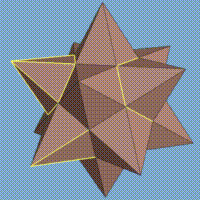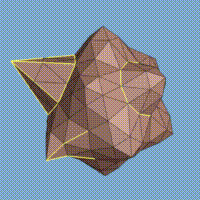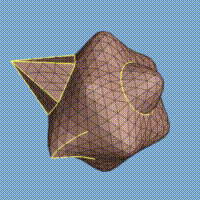

Subdivision surfaces -- defined as the limit of an infinite refinement process -- overcome many of these deficiencies. For instance, the images below show an initial control mesh, the mesh after one refinement step, after two refinements, and in the limit of infinite refinement, respectively.




Subdivision surfaces are easy to implement, they can model surfaces of arbitrary topological type, and as shown above, the continuity of the surface can be controlled locally. Although subdivision surfaces have been known for nearly fifteen years, their use has been hindered by the lack of a closed form -- they are defined only as the limit of an infinite procedure.
We believe that subdivision surfaces are a likely candidate to replace NURBS in future graphics and CAD/CAM applications. Our believe is partly based on recent work that shows how to compute exact properties (such as positions, normal vectors, and thin plate energies) despite a closed form. We have also discovered a connection between subdivision surfaces and multiresolution analysis (aka, wavelets). See Lounsbery, DeRose, and Warren and Eck et al. for more details.